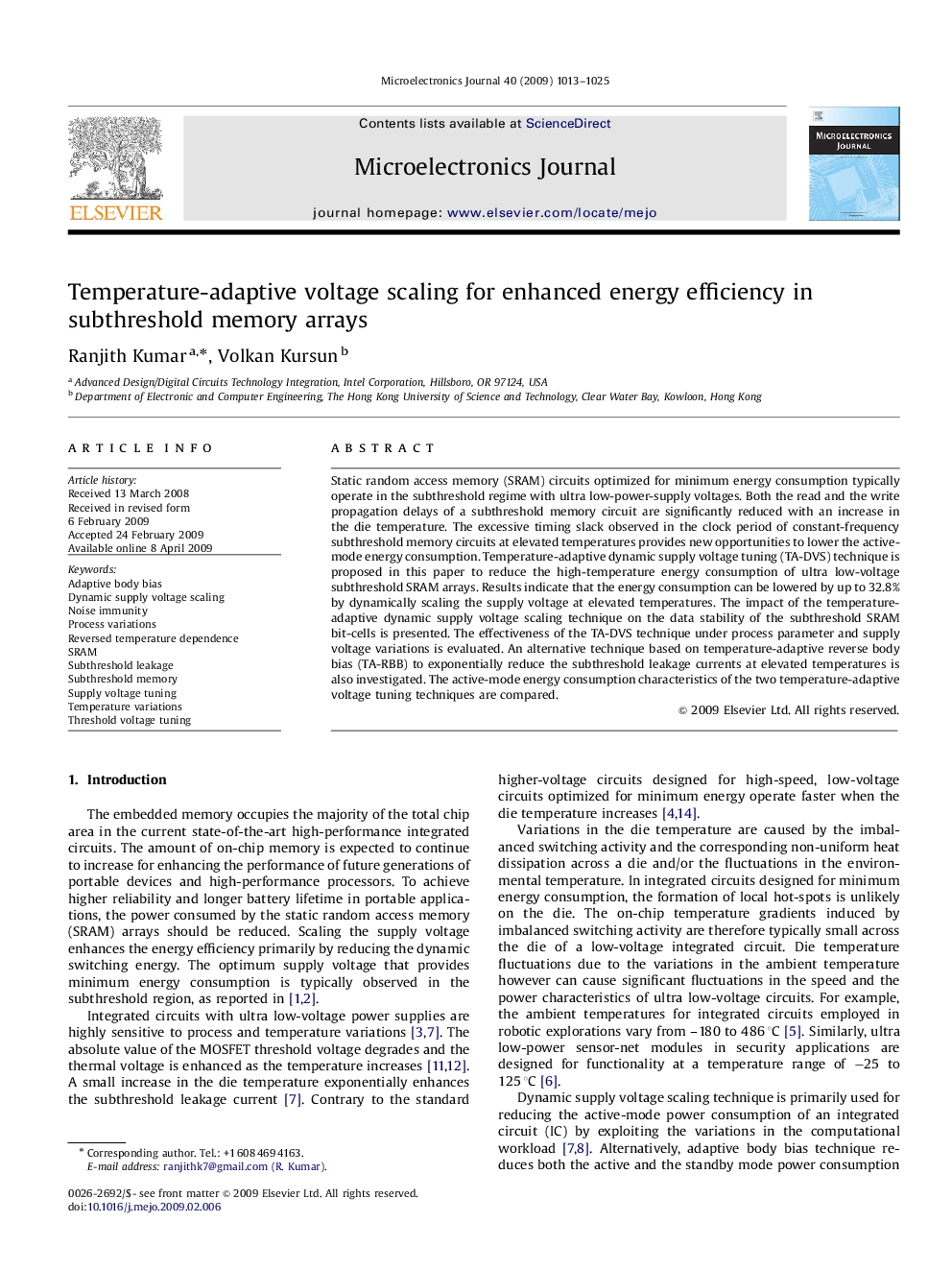| Article ID | Journal | Published Year | Pages | File Type |
|---|---|---|---|---|
| 547839 | Microelectronics Journal | 2009 | 13 Pages |
Static random access memory (SRAM) circuits optimized for minimum energy consumption typically operate in the subthreshold regime with ultra low-power-supply voltages. Both the read and the write propagation delays of a subthreshold memory circuit are significantly reduced with an increase in the die temperature. The excessive timing slack observed in the clock period of constant-frequency subthreshold memory circuits at elevated temperatures provides new opportunities to lower the active-mode energy consumption. Temperature-adaptive dynamic supply voltage tuning (TA-DVS) technique is proposed in this paper to reduce the high-temperature energy consumption of ultra low-voltage subthreshold SRAM arrays. Results indicate that the energy consumption can be lowered by up to 32.8% by dynamically scaling the supply voltage at elevated temperatures. The impact of the temperature-adaptive dynamic supply voltage scaling technique on the data stability of the subthreshold SRAM bit-cells is presented. The effectiveness of the TA-DVS technique under process parameter and supply voltage variations is evaluated. An alternative technique based on temperature-adaptive reverse body bias (TA-RBB) to exponentially reduce the subthreshold leakage currents at elevated temperatures is also investigated. The active-mode energy consumption characteristics of the two temperature-adaptive voltage tuning techniques are compared.
